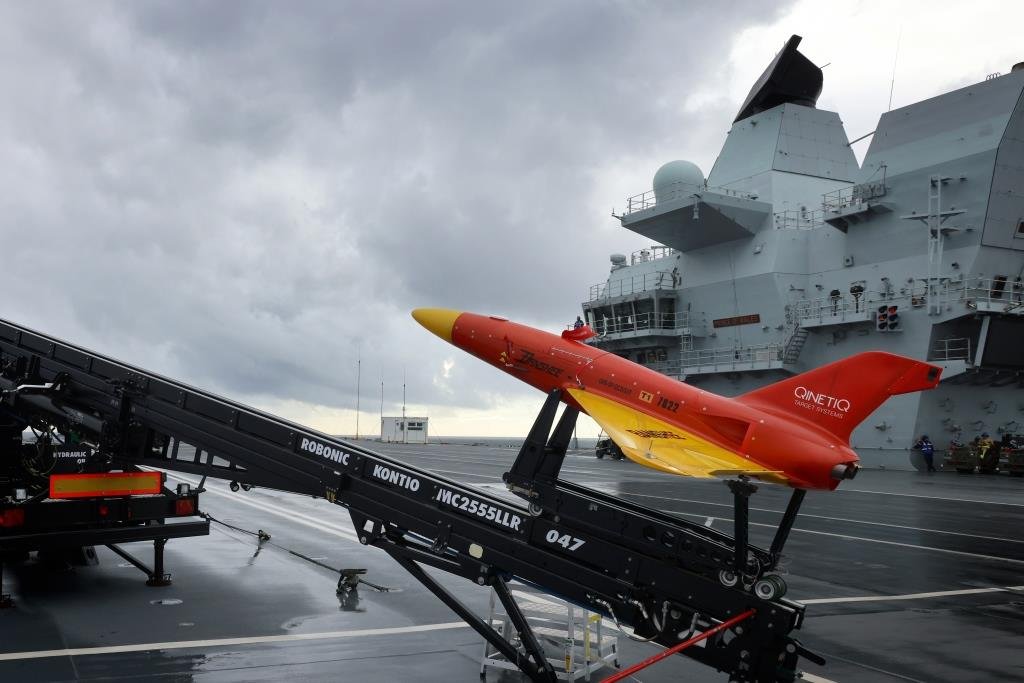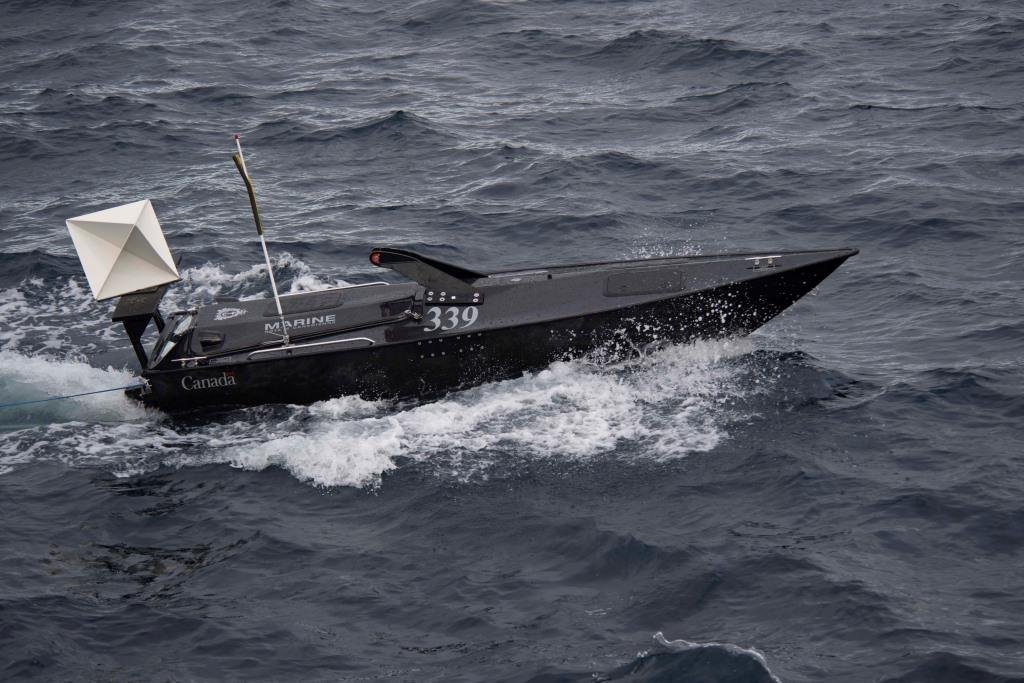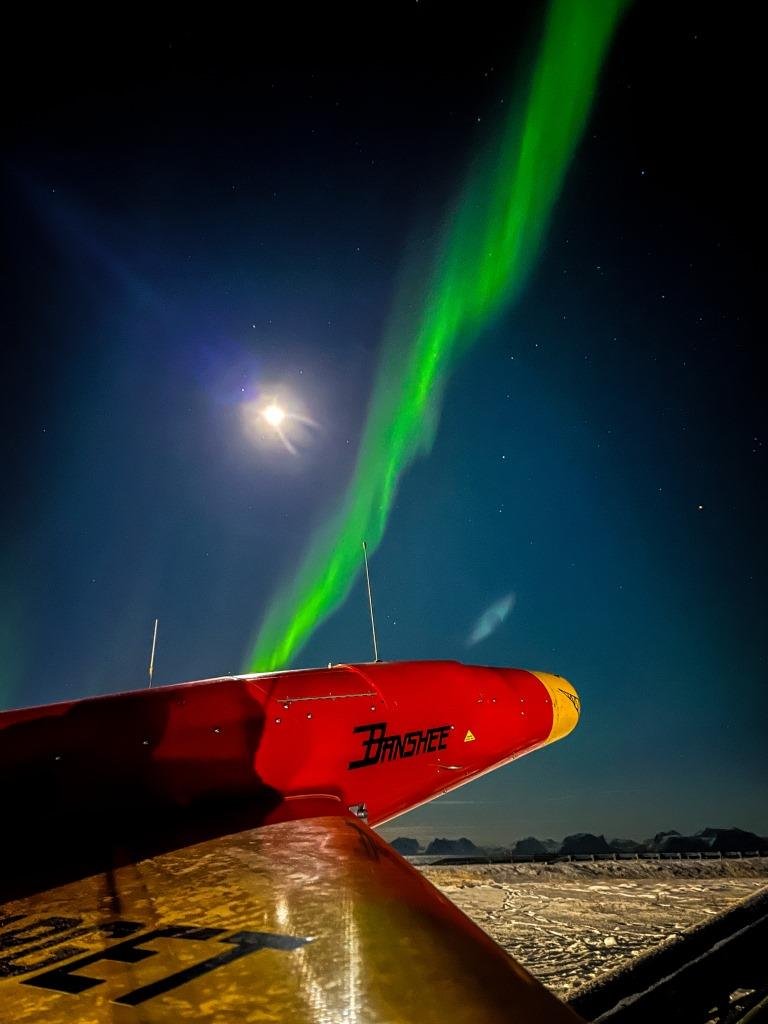MILITARY TRAINING - QinetiQ Target Systems
BY JAMES CARELESS
QinetiQ TARGET SYSTEMS
QTS continues to provide Canada and its NATO Allies with state-of-the-art, cost-effective training and mission readiness solutions, as militaries experience an unprecedented increase in threats
Advances in weapons technology means that the threats being faced by the Canadian Armed Forces (CAF) and its NATO partners are more challenging than ever before. Add tactics such as ‘swarming’, where groups of aerial drones or small, fast boats attack a larger target en masse, and Intelligence Surveillance Target Acquisition and Reconnaissance (ISTAR) applications, and the task of defending against such threats has become more complex as well.

To counter these dangers, “threat representation training” using moving targets that mimic the movements of actual threats has become vital in defending against attacks on air, land and sea. The challenge is to do this kind of training in a cost-effective manner, so that cash-strapped militaries can balance training expenses with the need to maintain and replenish their equipment stocks. This is particularly true now, when so much of NATO’s arsenal has been donated to Ukraine in its defensive war against Russia, and needs to be replaced.
Fortunately, devising cost-effective reusable Training and Mission Readiness (TMR) solutions is what QinetiQ Target Systems (QTS) is all about. Known for Uncrewed Vehicle Systems (UVS) such as the Banshee family of remotely piloted aerial targets and the Hammerhead uncrewed surface vehicle — a 17' fibreglass speedboat — that simulates fast inshore attack boats, QTS’s reusable threat representation targets make affordable TMR possible.
To meet the growing sophistication of actual threat situations, the company is now adapting its mature UVS platforms to perform a broader range of autonomous training operations, by integrating them with other technologies to create highly flexible, low-cost aerial and surface systems. This means that groups of QinetiQ targets can be used to train troops with the most realistic of adversary representations.
A PEDIGREE OF SUCCESS
Located in Medicine Hat, Alberta, and Ashford, Kent, UK, QTS is a leader in the design, development, manufacture and operation of advanced target systems and uncrewed vehicles for applications such as live-fire training, weapons test and evaluation (T&E), and Intelligence, Surveillance, Target Acquisition, Reconnaissance (ISTAR). For over 40 years, QTS has worked closely with its customers on everything from the design and development of advanced UVS products to the provision of highly qualified field service operators and technicians to support these systems.
“QTS has extensive experience in providing UVS target support services to Canada’s Department of National Defence (DND) and the UK’s Ministry of Defence (MOD) for almost 40 years,” said Mark Freeman, the company’s Director of Customer Accounts. QTS has supplied similar products and services to the US Department of Defense for more than 20 years and serves other NATO-friendly countries around the world as well.
QTS’ UK parent company QinetiQ was created in July 2001, when the MOD broke its Defence Evaluation and Research Agency (DERA) in two. The larger part of DERA, which included most of its non-nuclear testing and evaluation establishments, was renamed QinetiQ and privatized. The smaller portion of DERA was renamed DSTL (Defence Science & Technology Laboratory) and remains under MOD control.
“The QTS Medicine Hat facility traces its origins to the Systems Integration Group at Defence Research Development Canada (DRDC)-Suffield Alberta, which was given a mandate by Canada’s Defence Research Board (DRB) to develop a family of Uncrewed Vehicle Targets to support the RCN Halifax Class Ship Program, TRUMP Program and the Canadian Army Low-Level-Air-Defence Program,” Freeman told CDR. DRDC’s initial commercial partner to support its efforts began as Boeing Canada (Winnipeg), who acquired the marketing rights to several different targets/payloads. The subsequent corporate ownership includes Bristol Aerospace (1992 – Winnipeg), Schreiner Canada (1999 – Medicine Hat), Meggitt (starting in 2003) and QinetiQ as of December 2016.
“It is important to note that while the company has changed names, most of the key staff remained the same over the years and the parent company’s commitment to Canada remains as strong as ever,” Freeman said. “Meanwhile, it is estimated that the original investment of $10 million made by the DRB has generated over $600 million worth of exports since 1983 and generated an uncrewed supply chain of over 700 businesses reaching across the country.”
CONSTANT INNOVATION 
The QTS product family has been around for 40 years but is constantly evolving and adapting to meet the latest requirements of its clients.
“We have a very wide product portfolio that has a very big legacy to it along with a valued, diverse customer base,” said Leighton Wenham, QTS’ Technical Business Development Manager, previously Principal Design Engineer on the Banshee aerial platform. “For example, the Banshee has been in service now in various forms for over 40 years and has become very well known within the business as a world class target platform,” Wenham told CDR. “It’s now being supplied to over 40 countries worldwide, 15 of which are part of NATO.”
Today, QTS offers a broad product portfolio that spans across a wide range of cost and performance points to suit various customer requirements, from propeller-driven Banshee aerial targets to the Hammerhead fast boat simulators and high-performance jet/rocket-powered platforms. Whatever the item, all have been designed with affordability in mind, without compromising their durability, reliability, and reusability.
“We have always excelled at offering excellent performance at an affordable price point, with most systems being reusable multiple times if not actively engaged,” Wenham said. “This is important for military customers predominantly in order to both facilitate cost-effective training while ensuring that training is undertaken using a representative target to maximise its training value.”
This balance is in line with QTS military customer demands, many of whom are battling tight budgets.
“One of the big requests that we’re getting from customers is for even more performance but still at an affordable price point,” said Wenham. “Of course, the technologies themselves are evolving significantly in terms of both platform speed, endurance, altitude of operation, and maneuverability, and that’s obviously being driven by the fact that a lot of the threats are evolving as well. So, threat representation has to evolve in order to actually match that need. To that end, we are continuing to enhance the existing Banshee family’s performance whilst introducing new more advanced products — while still keeping our products and systems affordable.”
Addressing advanced threat representation demands such as ‘swarming’ is included in QTS’ portfolio. A case in point: “In 2009 we released not only the Hammerhead, but also a major technology development where we allowed for multi-vehicle operations through a single ground control station,” said John LeBlanc, QTS’ Customer Account Manager. “This was just a year after the fast boat attack on the USS Cole. This combination of Hammerhead/ground control system is designed to allow operators to train for this kind of fast boat attack. We trialled it a year later with the Royal Canadian Navy (RCN), using 16 Hammerheads and four Barracudas (fibreglass hull, rigid inflatable boats). That was a first of its kind trial in Canada.”
When it comes to product selection, QTS is all about providing its customers with choice. “Customers can choose to either purchase complete equipment packages from us including comprehensive training or we can offer operational services, where we supply and operate the equipment on behalf of the customer,” Wenham told CDR. “The latter can be very cost-effective for short term trials and evaluations almost anywhere in the world, undertaken by our own highly skilled team of staff.”
Beyond developing, manufacturing and supporting target vehicles, QTS devotes its time to the testing and evaluation (T&E) of weapons platforms, the development of the CONOP related to these systems, and enabling operators to train in the use of these weapons systems. “CONOPs is Concept of Operations, meaning how you are going to use that platform, how it's actually going to be presented to the weapon system, the flight profile, and whatever payloads that you may carry,” said Wenham. “The scenarios that are currently being generated are becoming more and more sophisticated in line with the current threats.”
With the addition of different payloads and understanding the customer and mission specific requirements, our platforms have been utilized for non target uses. Through cooperation with DRDC Ottawa we have collaborated on the Humpback USV Off Board Jammer system that had several successful trials at RIMPAC exercises. QTS then took the lessons learned from that mission set to provide a system to another ally for the use in an anti-radiation weapon scenario a test and evaluation event. This capability of the baseline system has also allowed the RCN to take the Hammerhead and Humpback systems for trials in the arctic used to map the depth of various features. This is an entire non-target-based use case where the capabilities of the C2 system and the platform were utilized to carry mission specific payloads to gather key intelligence. QTS is continuing to assist the DRDC Community in the exploitation of the systems to provide value to DND into the future. With the single use or one-way mission set gaining traction as a war fighter capability in the conflict in the Ukraine, that mission set could be adopted to the QTS systems.
A FORCE MULTIPLIER
In addition to supporting multi-UVS threat representation training scenarios, the uncrewed target vehicles made by QinetiQ can be used as a force multiplier for operators of crewed vehicle systems. This is an application currently being investigated by the UK’s Royal Navy, through its “Vampire” test program.
“Vampire is examining how you can practically integrate a UAV into a busy naval platform, including all the required ground control and launching equipment,” Wenham told CDR. “Initial trials have already taken place onboard the aircraft carrier HMS Prince of Wales where several Jet80+ Banshee flight operations were successfully conducted. The Banshee can be controlled by an operator through various flight modes. These include automatic waypoint navigation or more manual commands such as bank angle and heading demands. Live telemetry [automatic and wireless transmission of data from remote sources] is fed back to the operator to provide situational awareness.”
Beyond providing support to crewed aircraft during missions, the ability for a carrier fleet to have its own on-board target platforms is also a key advantage — with live firing exercises, sensor and comms testing, weapon evaluation and general crew training available to be conducted anywhere and at short notice. “With a UAV onboard, you can also explore how crewed and uncrewed assets can be operated and managed in the close confines of a carrier along with the surrounding airspace,” Wenham told CDR.
COMMITTED TO CANADA
Through its many years in Canada, QTS has demonstrated its commitment to the defence of this country.
Part of this commitment has been expressed through the company’s long-standing relationship with the RCN, which has acquired a number of QTS products for threat representation training. QTS has also worked with the RCN on important demonstrations of evolving threats such as remotely-controlled drone attacks.
In 2017, using a Halifax-class frigate as its flight platform, QTS flew its Snyper multi-rotor target alongside Lockheed Martin’s Indago quadcopter using QinetiQ’s Universal Target Control Station (UTCS), which facilitates the operation of multiple uncrewed systems from a single command centre. Such shipboard systems can be used by operators such as the RCN to hone their crews’ defensive responses to drone attacks.
QTS’ Canadian service personnel work closely with the RCN as well. “We do a number of different field service types of operations with them,” said LeBlanc. “We do annual maintenance activities and fulfill emergency repair requirements that can be outside the scope of onsite logistical support that we usually provide. As well, we are brought in for complex test and evaluation trials as operators. So, we deploy with the Navy utilizing both our surface and aerial assets to ensure that complex training and evaluations are conducted properly.”
QTS is also an active supporter of Canadian defence industry suppliers. “They’ve been a vital resource to us for decades, but particularly now in the aftermath of COVID-19,” LeBlanc told CDR. “We've seen a lot of supply chain issues and large currency changes, which makes it very difficult to do pricing for multi-year contracts. By doing business locally and building up good partnerships with Canadian suppliers, we're able to be very agile, cost-effective, and able to support not just DND but other nations with our target vehicles and systems.”
PREPARING FOR THE FUTURE
QTS’ integration of its target vehicles into complex threat representation systems is an appropriate solution to the challenges being faced by its defence customers. This couldn’t come at a better time. “Our militaries are experiencing an unprecedented increase in threats, from unsophisticated swarming uncrewed systems to new and novel weapons and hypersonic weapons,” Freeman told CDR.
As the complexity and variety of threats grows, so does the sophistication of QTS’ response. “Obviously we are looking to increase their performance envelopes to maintain our existing products’ position within the marketplace,” Wenham said. “But we are also redeveloping them in line with the threats that are starting to emerge across the whole performance spectrum, whilst also investing in new target platforms. The other piece that we're doing is looking at a greater degree of integration with other systems, be that C2 systems, payloads, autonomy and synthetics in order to meet our customers’ requirements in terms of flexibility and adaptability.”
The bottom line: QinetiQ Target Systems is keeping the ever-changing demands of threat representation training systems in its sights. That’s why the company’s UVS products will evolve and adapt in step with the actual threats being faced by the world’s military organizations.
For more information visit QinetiQ at booth 414 at CANSEC.
James Careless is CDR’s Ottawa Bureau Chief


